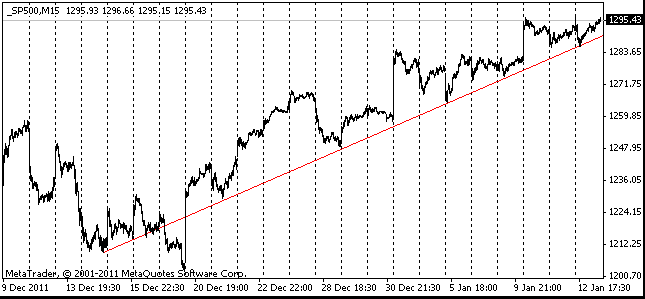EUR/usd
Yesterday the markets got very inspiring news that supported demand for risk. It was reported that Greece continued negotiations with its creditors, which is in itself a good sign. Negotiations were suspended last Friday, and many set to get ready for the uncontrollable default. Later markets got news that the IMF wanted to raise its lending capacity to $ 1 trillion dollars from the current less than 400 billion. Such sums will enable it to render support even to Italy, though not for a long time. The bond auction in Germany showed very good results. The country raised 3.44 billion at a record low yield of 0.17%. A month back the same bonds had the yield of 0.29%. Demand was 2.21 times higher than supply. The U.S. news was more cautious and that contributed to strengthening of the euro against the dollar. On the one hand, we got news about the growth of activity in the construction sector, as the NAHB index rose to 25 in January from 21 a month ago. But on the other hand, data on industrial production in the U.S. didn't manage to surpass the expectations, gaining only 0.4%, which is still a rather good result, making up for the decline by 0.3 a month back. The U.S. Treasury report on capital flows showed that Americans sticking to their zero interest rate policy still manage to increase demand for long-term securities, which have a higher rate. US TIC Long-Term Purchases proved twice higher than expected, totaling 59.8 billion in November. For all that the total TIC purchases of U.S. securities almost met the expectations, making 48.6 billion. On the technical side, the single currency is now at the very upper boundary of the downward corridor. If positive news keeps coming, the euro may be supported by a huge number of limit sell orders. Sellers, be careful – the euro may test 1.30 already this week.

GBP/USD
The British pound was supported by the weakening dollar. The pair topped the 1.5430 level and is now trading around it. The statistics on the UK labor market is positive only at first glance: the number of people receiving benefits turned out less than expected, having increased by 1.2 thousand. At the same time the unemployment rate continues growing. Now it is at 8.4%. It is interesting that at the peak of the economic downturn in 2010 the figure was 8.0%. That's all because of the decrease in government employment. The number of public sector jobs fell by 276K over the year to September. All this shows how much the British government is tightening its belts. With this in mind it is not very surprising that wages of those who are still employed are growing slower. According to the released data, average weekly earnings for three months to November proved 1.9% higher than those of the last year. Remember,prices for the same period of time were about 5% higher than a year back. Early this morning Nationwide published the consumer confidence index. The figure dropped from 40 to 38 points, just two points above the record low reached in October. In comments to the release it is said that consumer optimism can hardly be expected for most part of the year.

Index S&P continues to grow, showing the best start of the year since 1987. This only aggravates the overbuying we talked about earlier. Once again let's focus on the divergence between the high expectations of the market and extremely cautious statements of the politicians. oil remains at $100 per barrel, which will hold down the growth rate to some extent. The fate of Greece is not decided yet while Italy and Spain are well on the way to austerity and they have no choice. Greece and Britain serve as the best examples of how hard this way can be (see above). Thus, we've still got many reasons for frustration. In fact, with great certainty we can say that the current levels of the index – higher than 1.300 – are too high.

AUD/USD
The data on the Australian job market proved to be very weak, just as had been predicted in the preceding reports. The expected employment growth by 10.2K proved too optimistic to come true. This index lost 29.3K in December. However, the positive factor is that the decline was caused by the data on part-time workers (-53.7K). There shouldn't be much joy about the unemployment rate remaining at 5.2% against the expected increase to 5.3%. The cut in the number of employees was offset by lower labor force (-33K). Decrease in the economically active population will make consumer spending even more cautious. Weak labor market data forced aussie to fall from 1.0430 to 1.0370 despite the fact that markets are generally characterized by good demand for risky assets. Aussie is not among them yet.
